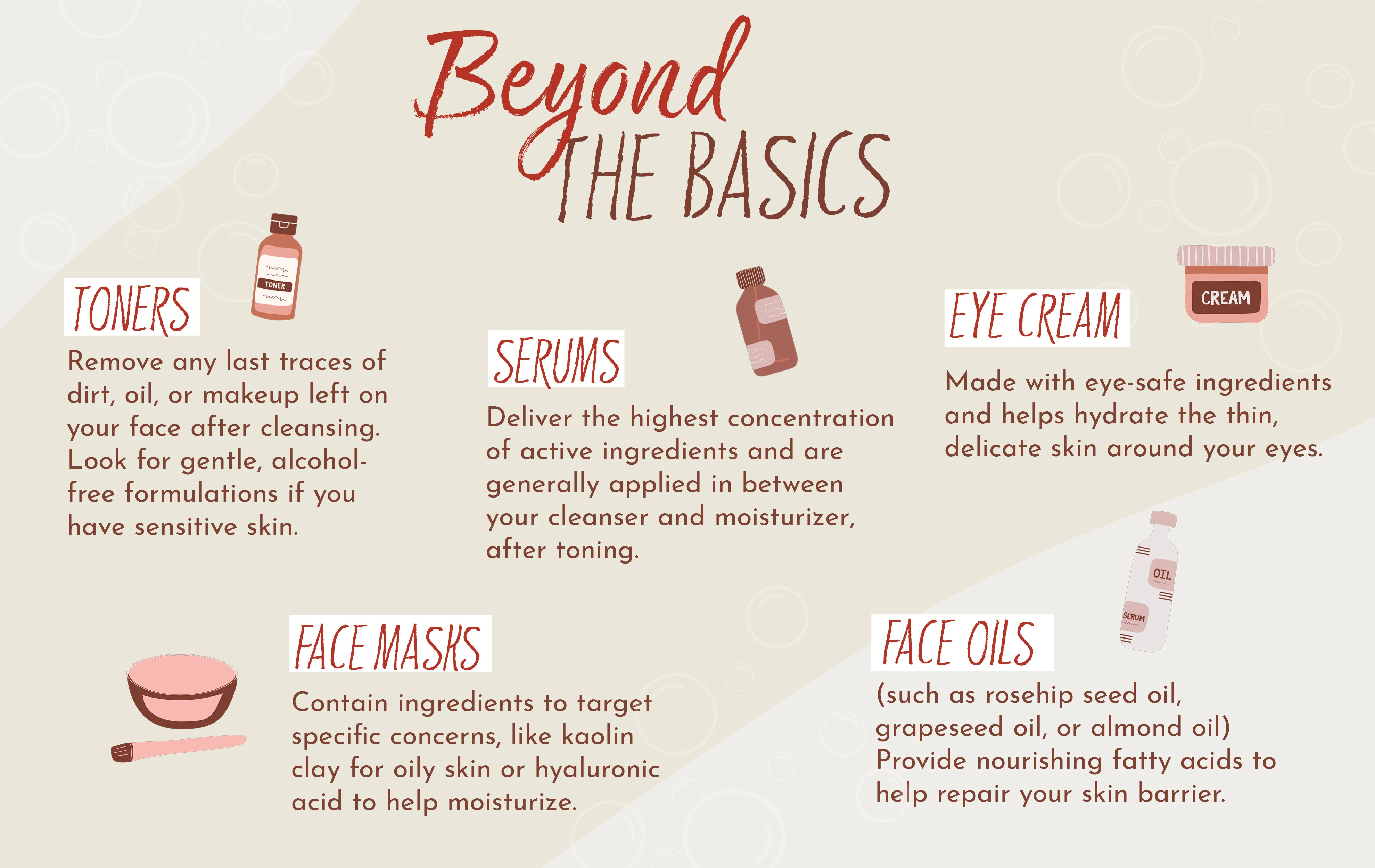What are the basic step of skincare
The Basic Steps of Skincare
Taking care of your skin doesn't have to be complicated. A basic skincare routine with a few essential steps can go a long way in keeping your skin healthy, glowing, and balanced. Whether you're a beginner or someone looking to refresh your routine, understanding the core steps of skincare is key. These steps apply to all skin types, though you can customize them based on your skin's specific needs.
1. Cleansing (Morning & Night)
Cleansing is the foundation of any skincare routine. It removes dirt, oil, sweat, makeup, and pollutants that accumulate on your skin throughout the day or night. Using a gentle cleanser suited to your skin type helps keep pores clean and prevents breakouts.
-
Dry skin: Use a hydrating or creamy cleanser.
-
Oily skin: A foaming or gel cleanser can help remove excess oil.
-
Sensitive skin: Choose a fragrance-free and gentle cleanser.
Cleanse your face twice daily—once in the morning and once before bed.
2. Toning (Optional, But Helpful)
Toners help restore your skin’s pH balance, remove leftover residue after cleansing, and prep the skin for better absorption of other products. While not essential for everyone, toners can be beneficial depending on your skin type.
-
Hydrating toners soothe and moisturize dry or sensitive skin.
-
Astringent toners help tighten pores and reduce oiliness in oily or acne-prone skin.
-
Always look for alcohol-free formulas to avoid over-drying.
3. Moisturizing (Morning & Night)
Moisturizing is crucial for all skin types—even oily skin. A good moisturizer helps hydrate the skin, locks in moisture, and strengthens the skin barrier.
-
Dry skin: Use a rich, cream-based moisturizer.
-
Oily skin: Opt for a lightweight, oil-free or gel-based moisturizer.
-
Combination skin: A balanced formula works best.
Applying moisturizer after cleansing (and toning, if used) ensures your skin stays soft and supple.
4. Sun Protection (Morning Only)
Sunscreen is one of the most important steps in your morning skincare routine. It protects the skin from harmful UV rays that can cause sunburn, premature aging, dark spots, and even skin cancer. Use a broad-spectrum sunscreen with at least SPF 30, and apply it as the last step of your morning routine.
Even on cloudy days or when indoors near windows, UV rays can affect your skin. Reapply every two hours if you're outside.
5. Exfoliating (1–2 Times Per Week)
Exfoliation removes dead skin cells, unclogs pores, and helps brighten the complexion. You can use a physical exfoliant (scrubs with gentle beads) or a chemical exfoliant (like AHAs or BHAs).
Don’t over-exfoliate—it can lead to irritation or damage the skin barrier. Start slowly and adjust based on how your skin reacts.
Optional Steps:
-
Serums: These are concentrated treatments targeting specific concerns like acne, dark spots, or aging.
-
Eye Creams: For puffiness, dark circles, or hydration around the delicate eye area.
-
Masks: Occasional use for deep hydration, detoxifying, or calming benefits.
Summary: A basic skincare routine involves cleansing, moisturizing, and protecting with sunscreen. Optional but beneficial steps include toning, exfoliating, and using targeted treatments. Consistency is key—simple daily care helps maintain healthy, radiant skin over time. Customize your routine to suit your skin type and needs.

Related Blog
What Causes Oily Skin and Can It Be Managed Naturally? Exploring Root Causes and Gentle Solutions
Aug 2, 2025 by Admin
General
What Are the Signs That You Have Sensitive Skin? Key Symptoms to Help You Identify This Delicate Skin Type
Aug 1, 2025 by Admin
General